Soule
Soule
Xiberoa or Zuberoa | |
|---|---|
Province | |
|
UTC+2 (CEST) |

Soule (French pronunciation:
Its provincial capital is Mauléon, which combined with Licharre in 1841 to form "
Etymology
The territory is named Xiberoa in
History
Soule has been continuously inhabited since the last
Ancient Soule
The territory was already inhabited in the Middle Paleolithic; Neanderthal prehistoric settlements have been found in the caves of Xaxixiloaga in Aussurucq and Etxeberri. At the end of the Neolithic the population had extended and assimilated knowledge from other peoples. There are protohistoric settlements that show a simple material life and a lifestyle dominated by migration. Remains of coins and other monetary artifacts have been found, proving the existence of an exchange economy in Soule, which very likely worked as an access point between Aquitaine—Novempopulania—in the north and the southern side of the Pyrenees.
At the time of the Roman arrival in the 1st century, Soule was inhabited by an Aquitani tribe named Suburates, who spoke the Aquitanian language (a form of Proto-Basque). As with other peoples in Aquitaine, the Romans had some influence in the territory, although Soule kept its language and culture and was relatively unimportant during the times of the Roman Empire, due to its isolation. The only evidence of Roman influence in Soule exists in the chapelle of the Madeleine, in Tardets.
Soule is first mentioned as a territory in a text from the 7th Century. In 636 (or 635) the
Middle Ages

The region of Soule may have developed a primeval political structure before the 11th century with a strong influence from the
In the year 1152 Eleanor of Aquitaine married Henry II of England, and thus the Duchy of Aquitaine joined the Crown of England. In 1261, after ten years of conflict, the last viscount of Soule, Auger III, surrendered the castle of Mauléon to Edward I of England, and as a result the territory of Soule was administered by the crown of England. At this time the current network of roads between the Souletin villages was constructed.
Soule under English rule
The English Soule was under the direct authority of the Duke of Aquitaine, who was also the King of England. Control over the territory was delegated to a lord, who kept the castle of Mauléon and collected the taxes. The lord of Soule had fourteen captains, of whom only one was English, the rest being either locally-born or Gascons. The ex-viscount Auger III allied with the Kingdom of Navarre, and taking advantage of the war between Philip IV, king of Navarre, and Edward I of England, retook his fortress at Mauléon in 1295, but he was forced to hand it back after Aquitaine was formally declared English in 1303.
The Hundred Years' War kept Soule isolated from the exterior for many years. Finally, in 1449, an army led by Gaston IV, the Count of Foix and Viscount of Béarn, took possession of the castle in the name of the French king ending the English presence in Soule.
Modern Period
Soule under French rule
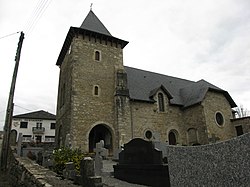
In the mid 15th century, Soule finally recognizes the
The end of home rule

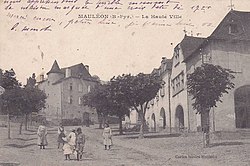
The province of Soule relied largely on the commons set on the highlands and lowlands of the valley for the use of local farmers and shepherds. However, they were also coveted by local and alien lords with estate grants on Soule. By the mid 17th century and in the context of the
Still Soule managed to retain many native laws and institutions, with its representatives attending the
Attempts by the Basque deputies in Paris to create a Basque department failed, their districts merged with Béarn among protests of the Basque representatives, and even Soule was divided into two cantons. After the end of the First Carlist War in Spain and the relocation of customs to the Pyrenees from the Ebro (1841), trade with Navarre collapsed. In the late 19th century, the establishment of espadrille factories in Mauleón made up for the decay of economic life and emigration, with a number of inhabitants in Navarre and Aragón pouring in and being recruited on the workforce.
Geography
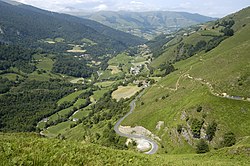
Soule is located in the northern basin of the western
Soule includes three geographical regions: the lowlands at north on a territory known as Pettara or Lower Soule, a forest region known as Arbaila and the highlands at south, in a region named Basabürüa with a highest peak at 2,017 meters (6,617 feet) at the Pic d'Orhy.
Orography
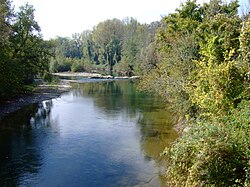
Soule's orography divides into three regions: the northern lowlands, made up by extensive plains; the central region, which is fairly hilly and the southern highlands, which are part of the northwestern Pyrenees, with altitudes reaching up to 2,017 meters (6,617 feet) above sea level at the Pic d'Orhy.
In the Pyrenees, from west to east, the first peak is the Pic d'Orhy, above 2,000 meters (6,600 feet) and the fourth highest peak in the Basque Country after Iror Errege Maia and Euzkarre among others, all of them in Navarre. Also in the highlands are located the Otsogorrigaina (1,922 metres (6,306 feet) and Sardekagaina (1,893 metres (6,211 feet), which are the second and third highest mountains in Soule. In total, there exist more than 20 peaks higher than 1,000 metres (3,300 feet).
Hydrography
The river Saison (known as Ühaitza in Souletin Basque) is the main river of Soule. It is 60 km (37 mi) long and originates at Licq, in the highlands region. Smaller rivers rising at the Pyrenees join the Saison before it converges with the river Oloron, together flowing into the river Adour.
Climate
The oceanic climate of Soule is generally warm and humid. The highlands and Pyrenees experience an alpine climate.
Demography
Soule is the province with the lowest population density of the Northern Basque Country, with 17 people per square kilometer (44 people/sq mi). Soule has experienced a significant population decline since the 19th century; many people have emigrated to larger cities and regions outside the province, such as Labourd, Béarn and Paris. In the last century, Soule has lost more than three quarters of its population, which has caused the need for different municipalities to be merged in order to assure the maintenance of public services.
Largest cities
| Most populated communes [3] | |||||||
|---|---|---|---|---|---|---|---|
| Position | Name | Inhabitants | |||||
| 1st | Mauléon-Licharre (Maule-Lextarre) | 3,347 | |||||
| 2nd | Chéraute (Sohüta) | 1,104 | |||||
| 3rd | Barcus (Barkoxe) | 774 | |||||
| 4th | Viodos-Abense-de-Bas (Bildoze-Onizepea) | 743 | |||||
| 5th | Tardets-Sorholus (Atharratze-Sorholüze) | 590 | |||||
Administrative divisions

Traditionally, Soule has been divided into three geographical regions, each of which group a determinate number of municipalities or communes.
- Pettarra,[4] comprising the lower Soule, in the north. It includes the towns and villages of Ainharp, Aroue-Ithorots-Olhaïby, Berrogain-Laruns, Domezain-Berraute, Espès-Undurein, Etcharry, Gestas, L'Hôpital-Saint-Blaise, Lohitzun-Oyhercq, Mauléon-Licharre, Moncayolle-Larrory-Mendibieu, Osserain-Rivareyte, Viodos-Abense-de-Bas.[5]
- Arbaila,[6] in the mid-lands. It is divided into two regions: Arbaila Txipia ("small Arbaila") and Arbaila Handia ("big Arbaila"). It includes the towns and villages of Aussurucq, Garindein, Gotein-Libarrenx, Idaux-Mendy, Menditte, Musculdy, Ordiarp, Ossas-Suhare, Pagolle, Roquiague, Sauguis-Saint-Étienne.[7]
- Basabürua,[8] comprising the highlands and Pyrenees. It is divided into two regions: Ibarresküin ("the right valley") and Ibarrezker ("the left valley"). It includes the towns and villages of Alçay-Alçabéhéty-Sunharette, Alos-Sibas-Abense, Barcus, Camou-Cihigue, Esquiule, Etchebar, Haux, Lacarry-Arhan-Charritte-de-Haut, Laguinge-Restoue, Larrau, Lichans-Sunhar, Licq-Athérey, Montory, Sainte-Engrâce, Tardets-Sorholus, Trois-Villes.[9]
For administrative purposes, the communes of Soule are grouped into four cantons; the canton of Mauléon-Licharre, that includes 19 communes; the canton of Tardets-Sorholus, that includes 16 communes; the canton of Saint-Palais and the canton of Oloron.[3]
Culture
After decades of emigration and demographic, social and cultural decay, the territory is showing a strong determination to recover the lost vitality of centuries ago. Assorted cultural events linked to old traditions bear witness to that dynamism.
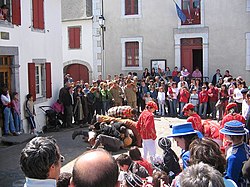
There is a tradition of folk musical theatre, the pastoral: the inhabitants of a village spend the year preparing and rehearsing the play and its dances. Traditionally, the subject of the play was Catholic, but recently pieces of Basque history are also presented. Another event akin to the pastoral beloved of the people of Soule is the maskaradas. This theatrical performances are put on in many villages of Soule in carnival time through spring. Each year a specific village takes the responsibility of arranging a new performance. It consists of a music band in due carnival outfit surrounded with a group of set carnivalesque characters and dancers parading up and down the main street of the host village; at the end, they stage an informal play usually in the market place or handball court.[10]
Soule is also renowned for its singing tradition, elegant dances and local music instruments, such as
Language
Soule's own language has been
The inhabitants call non-Basque speaking foreigners Kaskoinak, while other Basque speaking people (especially when referring to those of the French Basque Country) are dubbed Manexak after a commonplace sheep breed in the area.
References
- ISBN 2-7084-0003-7
- ^ La mort du duc Arembert en Soule massacré par les Basques en 636
- ^ a b Jean-Louis Davant: «Errolda: zonbat züberotar?» Archived 2012-01-29 at the Wayback Machine
- ^ Pettarra Auñamendi Eusko Entziklopedia.
- ^ Pettarra (Zuberoa (-a)) : place names in the website of the Basque language academy
- ^ Arbailles Auñamendi Eusko Entziklopedia.
- ^ Arbaila (Zuberoa (-a)) : place names in the website of the Basque language academy.
- ^ Basabürüa Auñamendi Eusko Entziklopedia.
- ^ Basabürüa (Zuberoa (-a)): Place names in the website of the Basque language academy.
- ^ "Zuberoko maskarada (pastorale)" (in French). Abarka. Retrieved 2011-12-24.
- ^ "Mixel Etxekopar & François Rossé - Une certaine Soule musique" (in French). Ethnotempos. Archived from the original on 2011-07-27. Retrieved 2008-01-28.

